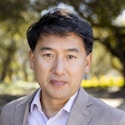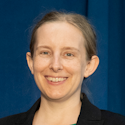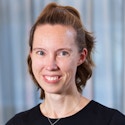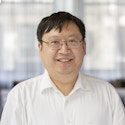Simons Investigators
- Email:
[email protected]
Simons Investigators are outstanding theoretical scientists who receive a stable base of research support from the foundation, enabling them to undertake the long-term study of fundamental questions.
The Investigator program has been discontinued.
Simons Investigators in Mathematics, Physics, Astrophysics and Computer Science
The intent of the Simons Investigators in Mathematics, Physics, Astrophysics and Computer Science programs is to support outstanding theoretical scientists in their most productive years, when they are establishing creative new research directions, providing leadership to the field and effectively mentoring junior scientists. A Simons Investigator is appointed for an initial period of five years. Renewal for an additional five years is contingent upon the evaluation of scientific impact of the Investigator.
Simons Investigators in Mathematical Modeling of Living Systems (MMLS)
This program aims to help the research careers of outstanding scientists working on mathematical and theoretical approaches to topics in the life sciences. A Simons Investigator in MMLS is appointed for five years.
Math+X Investigators
This program encourages novel collaborations between mathematics and other fields in science or engineering by providing funds to professors to establish programs at the interface between mathematics and other fields of science or engineering. A Math+X Investigator is appointed for an initial period of five years. Renewal for an additional five years is contingent upon the evaluation of scientific impact of the Investigator.
- Email:
[email protected]
- Email:
[email protected]
2023
Eugene Chiang, Ph.D.
University of California, Berkeley
Eugene Chiang is a theorist with interests in all things planetary. He has worked on proto-planetary disks, post-planetary debris disks, orbital dynamics and planetary atmospheres. A current focus is determining the properties of planets still accreting from their parent disks, to help interpret observations and place planet formation on an empirical footing.

Philip Hopkins, Ph.D.
California Institute of Technology
Phil Hopkins is a theoretical astrophysicist working on a range of problems including galaxies, stars, planets, dark matter and black holes. He has pioneered development of novel high-resolution numerical computational simulations to study complex multi-physics astrophysical systems, in particular those where microphysical and macroscopic astrophysical scales are strongly-coupled. His group has played a crucial role in constraining and testing different dark matter models, understanding the origins and nature of super-massive black holes and quasars, explaining why stars and galaxies have the masses and structure we observe, and exploring the physics of relativistic particles in interstellar gas.

2022
Alex Schekochihin, Ph.D.
University of Oxford
Alex Schekochihin is interested in the fundamental nature and practical implications of turbulence in plasmas. His main contributions have concerned the physics of turbulent dynamo (believed responsible for much of the observed cosmic magnetism), the free-energy cascade and the interplay between microscale instabilities and mesoscale dynamics in astrophysical plasmas from galaxy clusters to solar wind, and mechanisms for “phase transitions” between low- and high-transport states in fusion devices. Recently, Schekochihin proposed a theory of fluidization of collisionless plasma turbulence, owing to suppression of Landau damping by stochastic echoes. This has led to his ongoing interest in the general problem of turbulent relaxation and universal equilibria in collisionless plasmas.

Tracy Slatyer, Ph.D.
Massachusetts Institute of Technology
Tracy Slatyer is a theoretical physicist working at the interface of particle physics, cosmology and astrophysics, seeking clues to the mystery of dark matter in astrophysical and cosmological data. She was a co-discoverer of the giant gamma-ray structures known as the “Fermi Bubbles” and has done influential work on new theories of dark matter and possible effects of dark matter interactions from the early universe to the present day.

2021
Jonathan Fortney, Ph.D.
University of California, Santa Cruz
Jonathan Fortney models many aspects of the physics of planets, from rocky worlds to gas giants. His work in planetary theory focuses both on exoplanets that orbit distant stars as well as planets in the solar system. His models have provided a framework to understand the atmospheres of exoplanets, their interior structure and thermal evolution, as well as physical processes like helium “rain” deep within Saturn. Fortney often works closely with observers to interpret spectra of exoplanets to better understand their physics, chemistry and clues to their formation.

Yuri Levin, Ph.D.
Columbia University
Yuri Levin works on astrophysics of neutron stars, black holes and gravitational waves. He is known for computations of thermal and quantum noise in LIGO interferometers, for co-discovering a disc of massive stars orbiting the supermassive black hole at the center of the Milky Way, for developing gravitational-wave search algorithms for pulsar timing arrays, and for his work on the dynamics of magnetized neutron stars. Levin is currently attempting to understand the architecture of stellar clusters near supermassive black holes and figure out the origin of pulsar glitches.

2020
Brian Metzger, Ph.D.
Columbia University
Brian Metzger is a theoretical astrophysicist whose main interests lie in the births and deaths of compact objects. His work on neutron star mergers played an important role in interpreting the electromagnetic signal which accompanied the first merger detected via gravitational waves. As a result of this discovery, these rare events are believed to be among the main sources of the heaviest elements in the Universe. Metzger also works on supernovae, gamma-ray bursts, thermonuclear explosions on white dwarfs and the destruction of stars by massive black holes. He collaborates with astronomers to interpret these events using data across the electromagnetic spectrum.

Karin Öberg, Ph.D.
Harvard University
Karin Öberg studies the role of chemistry during planet formation. She combines theory, astronomical observations and experiments to explore the chemical environments within which planets assemble, the links between chemistry and dynamics in planet-forming disks and how the compositions of mature planets depends on the disk environment where they formed. Her models of planet compositions have provided an interpretive framework for the exoplanet community. Öberg’s work on the volatile and organic content of disks has begun to constrain how often we may expect to find planets with similar chemical starting conditions as those in our solar system.

2019
Daniel Kasen, Ph.D.
University of California, Berkeley
Daniel Kasen studies energetic astrophysical phenomena such as supernovae and compact object mergers and their applicability as probes of physics and cosmology. His models of electromagnetic signals have guided observational efforts and played an important role in interpreting the first neutron star merger jointly detected in light and gravitational waves. His work has helped illuminate the diverse ways in which stars die and how the heavy elements in the universe formed from their ashes.

Rachel Mandelbaum, Ph.D.
Carnegie Mellon University
Rachel Mandelbaum is an observational cosmologist who uses data from large sky surveys to measure gravitational lensing (the deflection of light from distant objects by more nearby mass). She works at all stages of the measurement process, including data analysis methodology, production of theoretical predictions and development of statistical methodology. She uses gravitational lensing measurements to reveal the connection between the visible components of galaxies and invisible dark matter, which can answer basic questions about galaxy evolution and to reveal how cosmic structure has grown and evolved, which relates to the accelerated expansion rate of the universe and dark energy.

2018
Yanbei Chen, Ph.D.
California Institute of Technology
Yanbei Chen made major contributions to understanding the noise of laser-interferometer gravitational-wave detectors that arise from quantum fluctuations of light and matter. He proposed conceptual interferometer designs that can achieve better sensitivity — also formulating a vision for experimentally testing quantum mechanics and quantum measurement theory on macroscopic objects. Chen made important contributions to gravitational-wave data-analysis strategies and works on using gravitational-wave observations to test the predictions of general relativity in strong gravity and to study the structures of black holes.

Ue-Li Pen, Ph.D.
University of Toronto
Ue-Li Pen is known for developing innovative tools to create new fields of research. His pioneering work on 21 cm intensity mapping opens a new window for the precision study of dark energy and neutrinos. Recently, his use of natural plasma in our galaxy as a giant telescope spawned the field of scintillometry, enabling new glimpses into enigmatic pulsars and the unsolved fast radio bursts. The orders of magnitude improved precision may improve our understanding of space-time, including gravitational waves.

2017
Eve Ostriker, Ph.D.
Princeton University
Eve Ostriker has made major contributions to our understanding of the role of the interstellar medium in star formation and galactic structure and evolution, with a focus on the role of turbulence and on the effects of energy returned by massive stars to the interstellar medium.

Wayne Hu, Ph.D.
University of Chicago
Wayne Hu has shown how cosmological observations can provide information about fundamental physics topics such as neutrino masses and dark energy.
